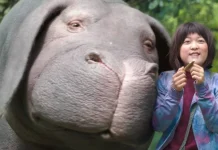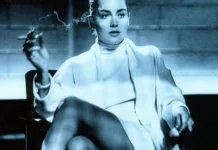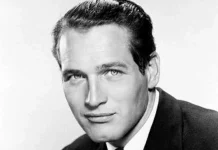Playboy has never been characterized by moving away from controversy. We are talking about a magazine that dared to break the conservative molds in the early fifties by featuring scantily clad models and actresses on the cover.
Addicted to being at the center of the debate for their desire to break taboos, Playboy dedicates in its next November issue , an extensive report in its central pages to Ines Rau, the first transsexual bunny.
Who is Ines Rau?
Ines Rau is a model originally from France who, at only 26 years old, has a long history of photo posing for brands such as Vogue or Bailman (for whom she has already starred in one of their fashion campaigns), also beingParticipate in various occasions of parades for the catwalks of the Fashion Week of Europe.
All this is nothing to write home about if we take into account that the modeling career usually begins at an early age. The novelty this time lies in the fact that we are facing what will be the first playmate who was not born a woman. For those who don’t know, playmates are the models to whom Playboy magazine dedicates its center pages in the issues they publish each month; honor that has been granted to Ines Rau for next November.
However, it is not the first time that Rau and the magazine have worked together. Already in 2014, Playboy counted on her to vindicate people of non-binary gender. Unlike that time, now Ines Rau is the protagonist.
Ines Rau at Paris Fashion Week 2017. | Image: Veeren – Bestimage
Playboy already had a transsexual woman on the cover
Yes, it was in 1981. Caroline ‘Tula’ Cossey became known for a brief role in the James Bond film For Your Eyes Only (1981), starring Roger Moore. After this brief appearance, Playboy offered her the opportunity to be the cover of one of her copies.
A year after that, the tabloid newspaper News of the World published a story revealing the truth about Caroline Cossey, something that left her very touched professionally and personally, reaching the point of suffering humiliation on television, which led her to consider the possibility of committing suicide.
Despite this losing streak, in 1991, Cossey published his autobiography and, in a display of courage, dared to speak about his past and process of transformation. Again, Playboy contacted her again to dedicate a report dedicated to her change.
Caroline Cossey: an inspiration for Ines Rau
Caroline Cossey’s courage has served as a behavioral example for Ines Rau of what it means to be proud of who she really is. For the new playmate, the words about the vindication of the beauty of transsexual people that Cossey has promulgated so much have served as a fundamental pillar for not hiding her condition and deciding to show it to the world.
According to Ines Rau,being able to show herself naked is something very important due to all the transition (psychological, emotional and physical) that has led her to be who she truly wants to be; In addition, he considers that it is a triumph of the human being to be able to show the beauty of any body without hesitation, be it a man or a woman.
The struggle of people like Cossey and Rau is helping to break down prejudices about transsexual people and make visible a group that, even today, suffers a lot of social rejection . From here our respect to the people who persevere for normalization and equality that, although there is still a lot of work to do, seems closer and closer.
Breaking more taboos: Hugh Hefner will be the cover of Playboy
Hugh Hefner was the founder and head of the rabbit-headed magazine until the late 1980s, when he handed over the baton to his daughter Christie, who was CEO of Playboy Enterprises until 2009. After Christie’s resignation , Scott Flanders took over from the firm until, in 2011, Playboy was transformed into a private management company .
After Hefner’s recent death, it seems that his youngest son, Cooper, is the main heir to the empire. Although he hadn’t been in charge of the company he created for a long time, Hugh Hefner has always been very loved by all the models and personalities who once worked for the magazine; thus,Playboy will dedicate the November cover, the same one that will include the central report to Ines Rau , to its beloved founder.
Although Hefner will not be shown in any provocative attitude or scantily clad, the photograph chosen to pay tribute to him will be one of the businessman taken in 1965 by Larry Gordon. Hefner, one of the representatives of sexual liberation, will be the cover of what was the first magazine of sexual erotic content for adults.
Instagram: supa_ines
More attempts to normalize trans people
Playboy is not the only example of a company that has opted to make this group visible , in an attempt to normalize trans people and fit them into society.
In early 2017, National Geographic dedicated its January issue to an in-depth report on transgender children. With the title Gender Revolution, there were two different covers: in one, we saw several boys and girls photographed in a spontaneous attitude and, on each one, it was indicated if it was a transgender boy or girl. On the other hand, the alternative cover featured Avery Jackson, a 9-year-old transgender girl , the first to occupy this space in the scientific magazine.
more cases: In mid-2015, the cover of Vanity Fair was occupied by an image of Caitlyn Jenner, who until recently went by the name of “Bruce”, father of the famous Kardashian sisters and now a woman. The photograph, taken by the great Annie Leibovitz, was highlighted with a headline that read “Call me Caitlyn” (Call me Caitlyn).
But it has not only been science, fashion or current affairs magazines that have been open to transgender and transsexual people. Also relatively recently, we learned about the case of Chelsea Maning, the first transsexual soldier in the United States Army., an institution that was considered rather closed-minded and that, with gestures like this, shows that it believes in the power of normalization. Let’s hope that examples like this spread and we don’t have to talk more about rejecting these people.






































